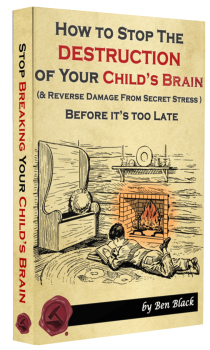
Disclaimer: I am not a financial advisor and this page exists to aid you in your research, but not make or suggest decisions for you. Further research is recommended for you to draw a conclusion of your own. Additionally some links contained on this page may be affiliate links in which Dynastus will receive a portion of sales at no additional expense to you.
It is possible to build generational wealth in your family through a number of means, regardless of where you are now financially.
As the founding father or founding mother of your dynasty, you will need to find the method to build financial capital that suits you and your own the best.
In this post, I will be talking about the family business wealth-building model, which is the third I will be discussing in this series. If you missed any of the others, you go back to the the first post in this series.
And as I always preface, with generational wealth, money is the least important thing. There is a reason the Scottish say, the father builds, his son buys, his son sells, and his son begs. There is a parallel colloquial proverb present in all cultures globally and goo reason for it.
What it Takes
Generational wealth primarily takes an immense amount of human capital which is essentially a strong family culture, a sense of togetherness and actual capable family members. These things are the glue that keeps a family along with its ultimate purpose(and it’s money) together.
There is nothing more important than family and the people within it. A healthy dose of intellectual and social capital helps a tonne too, of course.
And while I’m promoting my other content I may as well suggest you subscribe on YouTube as well.
The Traditionalist Model
Now, not so long ago, families were responsible for more of their child’s upbringing. Mothers typically took the majority of the load when it came to child-raising…among other commendable tasks. The father worked the fields, or tended the shop, or worked his craft as hard as he could. He, at least relative to the time, specialized more in the creation of wealth and putting the proverbial and literal bread on the table.
At the time of male children reaching adolescence, they would often apprentice to their father to learn his trade skill or craft. Yeah, sometimes they may choose to apprentice to another person, often a friend of the family.

Carpentry used to be(and still is) a common family business. That’s how the last name ‘Carpenter’ came about.
Evolving
Future generations may take their base trade skill and go down a slightly different specialization in the same field as their father, which may add diversification, but oftentimes they learned their base skillset from their parent and built upon this, leveraging and growing the family social network and reputation.
This is how surnames came to be – Tailor, Carpenter, Smith – all related to the family trade, and oftentimes bastardized along the way.
The Education Scam System
Now, with the relatively modern advent of the state-run educational systems and the traditional laid out path of school, college, debt, and paychecks the traditional family-oriented model has been basically forgotten.
And I dare say, in some ways, this is a good thing. It allows for more folks to learn different skills and learn more complex specializations and acquire qualifications to back them up.
But there are elements of the old path we can build upon to develop the generational wealth-building model known as The Family Business Model.
The Fundamentals
The name may suggest that this wealth-building strategy requires an operational business of some sort, and yeah that definitely helps, but it is not a necessity. This is because this model’s main resource is intellectual capital.
The passing over of accumulated knowledge to the next generation, which grants the capacity to earn independently. This is rather than more reliance on interdependence such as The Collective Method demonstrates, and is also, kind of opposed to the social leverage as The Great Accumulator offers though not wholly, more on that in a minute.
An example of the passing of such knowledge may be found in a business the Patriarch owns. He educates his daughter to operate/participate in the business as she grows up. After high school, rather than taking on debt and attending college, she is educated in business operations of the Family Business.
Or alternatively, she may go and learn a supporting skill at college, making social connections along the way, and then leverages these after college to enter the business and help it grow.
Or she goes onto start a business of her own in the same or similar field as her fathers business.
It may also come in the form of a trade skill and apprenticeship. For example, my father apprenticed me after high school, affording me the opportunity to build a seven-figure net worth in my 20s, rather than grinding to pay off debt to this day.
Other Types of Handovers
But it doesn’t stop there. Another form of intellectual capital transfer can even come in the teaching of personal finance to your children, or how to cook, frugality practices, entrepreneurial encouragement and anything else of a financial nature.
And this brings me back to why I said the family business model isn’t wholly opposed to The Great Accumulator…
Social Capital
A large part of wealth building comes from the social network, which makes up the social capital component of the family wealth paradigm. Parents with a strong social network and great reputation can afford their children the opportunities that come along with having connections and reputations in a community. Perhaps the patriarch is friends with the electrician who does work at his place of employment.
This social connection can be leveraged to get his son an apprenticeship.
Upon finishing this apprenticeship, Dad steps up again and gets his son a few clients from the bowls clubs, which the son starts to tend to on his days off and builds a client base of his own. This snowballs into a client base big enough that he can support himself and build a business of his own.
The father may have worked in a factory with no aspirations for a business of substantial wealth building, but by leveraging social capital and the family business model, has afforded his son the opportunity to increase his earning potential dramatically.
The Simplest Model
And that’s really the core of the family business method. Creating the capacity to earn. I dare not say it is the most accessible though, as not all families have such connections, backgrounds, and opportunities. This is where it is dissimilar to The Collective Model, which is incredibly accessible, while heavily dependent on Human Capital.
There is on eother aspect to the family business method, and that is the actual business side of the model.
That is to say, the handover of a small family business that is not large enough to be put under independent management.
There are two main options. The first is to educate the children and hand over the intellectual capital required to run and business as is. Perhaps more hands will increase the capacity of such a business, like a glazier company, or a mechanics workshop. Or perhaps more family members allows for a greater level of management and thus the scale of the business can be grown by another factor.
Experience
Along with bringing your child into such a business, there is one thing that should nearly always be done first. A child intending to enter a family business should do a minimum of 2 years working elsewhere, preferably in the same industry or similar role. Ideally, this will be 5 years as this will bring in more experience and skills that the business itself may not have been able to supply.

The Rothschild Dynasty made their start in banking. The sons learning from their father, Mayer.
College Has Its Place
Another approach is for the child to pursue a higher level/alternative education, is whatever that form may be. They then bring those skills into the family enterprise. It is still a recommendation there be an external work experience of 2-5 years, however.
The Family Business
And that’s about it for The Family Business model. It’s actually rather simple, and definitely not about the actual money, but more about the capacity to earn to higher and higher levels. Whether this is through an actual operating business, or through the transition to higher earning roes or into business using leverage.
A shift will need to and should be made later, most likely to The Great Accumulator model to garner the funds that will become actual family money.
None of the wealth-building methods are necessarily static, and often times a hybridization will be used is not an outright shift, as the family matures and they continue to build generational wealth.
Let me know what you think of The Family Business Model in the comments below.
Thanks for reading.
Yours,
Ben Black











